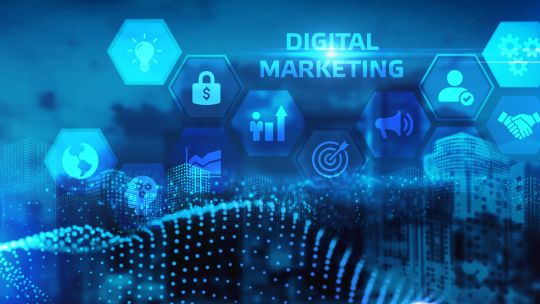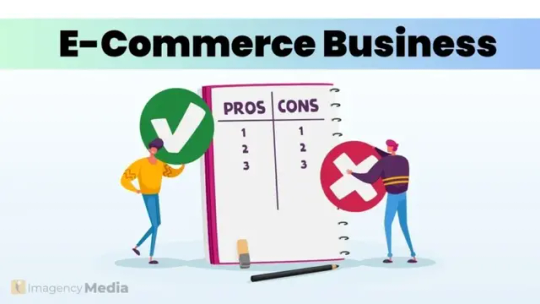#Social media commerce
Explore tagged Tumblr posts
Text

#E-tailers#Internet shopping#Mobile commerce#Electronic payments#Online shopping#Product catalog#Sales analytics#Social media commerce
0 notes
Text
"The re-election of Donald Trump to the presidency of the United States provided Meta [owner of Facebook, Instagram, Threads and such] with a glorious opportunity to pivot from futile co-operation with the EU to confrontation and coercion. If Meta could get the US government onside in its battles with the EU and other jurisdictions, then it would maximise its chances of success."
"In his Facebook announcement this week of changes to various policies, Zuckerberg candidly said that he wanted to 'work with President Trump to push back on governments around the world. They’re going after American companies and pushing to censor more. The US has the strongest constitutional protections for free expression in the world…The only way that we can push back on this global trend is with the support of the US government.'"
"For a corporation in the predicament of Meta this makes perfect commercial sense, even if it does violence to previously expressed sentiments. This is not an example of a company suddenly acting irrationally, but of a company rationally responding to one political development so as to facilitate defeating a regulatory challenge."
"And as the business models of most social media platforms require engagement above all — for without engagement you cannot have data mining and monetising and advertising — it really does not matter that the engagement is generated and amplified by misinformation and disinformation."
"The recent appointments at board level at Meta look like it is preparing for battle, and one in which its current commercial model requires it to defeat the aims of foreign governments. The new appointments make a lot of strategic sense."
"Nonetheless there is a fight ahead: over who shall regulate the social media platforms that in turn are influential in shaping (and contaminating) public discourse."
(Unfortunately behind a paywall: https://www.ft.com/content/917c9535-1cdb-4f6a-9a15-1a0c83663bfd )
#compliance in advance#meta#mark zuckerberg#zuckerberg#social media#regulation#countries#international#multinational#disinformation#misinformation#infosec#data ethics#commerce#state power#corruption#donald trump#trump#us politics#american politics#USpol#politics#political#EUpol#eu politics#BRpol#br politics#brazil#eu#european union
20 notes
·
View notes
Text
The Future of Website Development: Innovations and Best Practices for Modern Businesses

In today's rapidly changing digital environment, having a robust online presence is of paramount importance. For businesses in Oman, staying ahead in website development is crucial to capturing market share and achieving growth. The future of website development is marked by rapid innovations and evolving best practices that businesses must embrace to remain competitive. This blog explores the latest trends and essential practices in website development, offering valuable insights for businesses aiming to enhance their digital footprint.
1. Harnessing the Potential of Artificial Intelligence (AI)
Artificial Intelligence (AI) is transforming website development through the automation of processes and the customisation of user experiences. AI-powered tools can analyse user behavior, predict preferences, and deliver tailored content, which significantly improves user engagement. Chatbots, driven by AI, are becoming a standard feature on websites, providing instant customer support and enhancing user interaction.
AI also plays a crucial role in optimising websites for search engines. With the help of machine learning algorithms, businesses can analyse vast amounts of data to improve their SEO strategies, ensuring better visibility in search engine results.
2. Mobile-First Design: A Necessity, Not a Choice
With mobile internet usage surpassing desktop, a mobile-first approach is now a necessity in website development. The mobile-first design ensures that websites are optimised for mobile devices, offering a seamless experience across all platforms. This approach involves designing the mobile version of a website first and then scaling up for larger screens.
Responsive design is an essential aspect of mobile-first development. It ensures that a website adjusts its layout and content based on the screen size of the device being used, providing an optimal viewing experience. For businesses in Oman, where mobile device usage is prevalent, adopting a mobile-first strategy is critical for reaching a broader audience.
3. Enhanced User Experience through Progressive Web Applications (PWAs)
Progressive Web Apps (PWAs) are transforming the way websites are built and experienced. PWAs combine the best features of web and mobile applications, offering a fast, reliable, and engaging user experience. They can be accessed through a web browser but provide app-like functionalities, such as offline access and push notifications.
For businesses in Oman, implementing PWAs can enhance user engagement and retention. PWAs load quickly, even on slow networks, and offer a smooth experience, which is crucial for retaining visitors and reducing bounce rates.
4. Emphasize the importance of User Experience (UX) and User Interface (UI) Design.
User Experience (UX) and User Interface (UI) design are central to the success of any website. UX design focuses on the overall experience of the user, including ease of navigation, content accessibility, and interaction quality. UI design, on the other hand, deals with the visual elements of a website, such as layout, colours, and typography.
A well-designed UX/UI can significantly impact user satisfaction and conversion rates. Businesses in Oman should prioritise creating intuitive and visually appealing websites that cater to their target audience's needs and preferences. Conducting regular user testing and gathering feedback can help refine design elements and improve the overall user experience.
5. Integrating Advanced Security Measures
As cyber threats become more sophisticated, website security is more important than ever. Implementing advanced security measures is essential to protect sensitive data and maintain user trust. Some key security practices include:
- SSL Certificates: Secure the communication by encrypting the data exchanged between the user's browser and the server.
- Regular Updates: Keep software, plugins, and themes up to date to prevent vulnerabilities.
- Firewalls and Security Plugins: Use firewalls and security plugins to protect against malicious attacks and threats.
For businesses in Oman, prioritising website security is crucial to safeguarding customer information and maintaining a trustworthy online presence.
6. Optimising for Voice Search
With the rise of voice-activated devices and virtual assistants, optimising websites for voice search is becoming increasingly important. Voice search optimisation involves tailoring content and keywords to match the conversational queries users might speak into their devices.
Businesses in Oman should consider incorporating long-tail keywords and natural language phrases into their content to improve voice search visibility. Additionally, ensuring that websites load quickly and provide concise, relevant answers can enhance their performance in voice search results.
7. Leveraging Data Analytics for Continuous Improvement
Data analytics is a powerful tool for understanding user behavior and improving website performance. By analysing metrics such as user traffic, engagement rates, and conversion rates, businesses can gain valuable insights into what works and what needs improvement.
Implementing data-driven strategies allows businesses in Oman to make informed decisions, optimise their websites, and tailor their content to meet user needs. Regularly reviewing analytics data and making adjustments based on findings can lead to better user experiences and increased business success.
8. The Role of Content in Website Development
Content remains a cornerstone of effective website development. High-quality, relevant content not only attracts visitors but also helps in building authority and trust. Businesses should focus on creating engaging and informative content that addresses their audience's needs and interests.
Integrating multimedia components like videos, infographics, and interactive features can significantly boost user engagement and enhance the overall attractiveness of the website. For businesses in Oman, producing content in multiple languages can also help reach a broader audience and cater to diverse customer segments.
9. Future-Proofing Your Website
As technology continues to advance, it's essential to future-proof your website to adapt to upcoming changes. This involves using flexible and scalable technologies, adopting best practices, and staying updated with industry trends.
Choosing a robust content management system (CMS) and ensuring that your website's architecture is adaptable to new technologies can help future-proof your site. Consistently assessing and refreshing the features and design of your website will help maintain its relevance and effectiveness over time.
Conclusion
The future of website development is dynamic and filled with opportunities for innovation. For businesses in Oman, staying abreast of the latest trends and best practices in website development is crucial for maintaining a competitive edge and delivering exceptional user experiences. By embracing AI, mobile-first design, PWAs, and advanced security measures, businesses can enhance their online presence and drive growth. Prioritising UX/UI design, voice search optimisation, and data analytics will further contribute to building a successful and future-proof website. As technology continues to evolve, staying adaptable and forward-thinking will ensure that your website remains a powerful tool for achieving business success.
#Website Development Oman#Website Development#OMAN#Muscat#web design#web development#e commerce website design#marketing#digital marketing#design#seo#search engine optimization#social media marketing#ui ux development services#ui ux design
3 notes
·
View notes
Text
Emtechre Digital Agency: Your Gateway to Exceptional Web Design
Emtechre Digital Agency: Your Gateway to Exceptional Web Design Today, for your company’s online success, a professionally designed website can make a difference. We at Emtechre Digital Agency are devoted to designing websites that are visually stunning and have high functionality that enthrall the audience and yield tangible results.
We have a team of talented designers and developers who are capable of making your online presence a powerful tool for growth. After all, we realize that your site means more than just some web pages; it represents your brand as well as a vital point of contact with potential customers.
Our approach to web design is based on providing outstanding user experience. The website must be intuitive, visually beautiful and easy to navigate. Consequently, by implementing latest industry standards and best practices, we develop seamless and engaging user interfaces which will impress the visitors in an enduring way.
Emechre Digital Agency is proud to offer you customized solutions for your needs. We know every business has different goals and needs. Our team will cooperate with you in designing and deploying a solution that suits your vision whether it is a sleek informative website, a robust e-commerce platform or dynamic web application.
We are naturally built to stay ahead of the rest. We keep up with new technologies and trends so that your website remains modern, functional, and future-proof. From mobile first design that optimizes well for different devices, to incorporating interactive elements that enhance user engagement, we infuse innovation into every aspect of our web design process. Our partnership with clients is based on integrity and openness. We value your contributions and opinions, believing that a successful website is a result of teamwork. All through the web designing journey, we keep you posted by giving updates frequently and seeking for your feedback so as the final product will be beyond your expectations.
In conclusion, Emtechre Digital Agency is your go-to partner for web design excellence. Our team of experts combines artistic creativity with technical prowess to create stunningly beautiful websites that move your business forward. Employing an approach that is aimed at addressing the users’ needs, offering tailor made solutions as well as being committed to technological change leadership; we will ensure you make an impressive online footprint. Trust Emtechre Digital Agency to transform your website into a powerful asset that sets you apart from the competition and propels your business to new heights.
#web design#web development#webdesign#website#digital agency#digital marketing#e commerce#web developers#software#ads#google ads#social media management#seo services#seo#digitalmarketing#desing
11 notes
·
View notes
Text
#digitalmarketingagencyinlucknow#digital marketing company in lucknow#seo services#performance marketing#google ads#facebook ads#marketing agency#advertising agency#branding agency#e-commerce agency#website designing#internet marketing service#marketing consultant#social media marketing
3 notes
·
View notes
Text

Top E-Commerce Fraud Prevention Software Solutions
In today’s rapidly evolving digital landscape, e-commerce has become a cornerstone of the global economy. However, this growth has also given rise to sophisticated fraud schemes that pose significant risks to online businesses and their customers. To combat these threats, businesses must invest in robust fraud prevention software solutions. Here’s a look at some of the top e-commerce fraud prevention tools for 2024 that can help safeguard your online store and maintain customer trust.
1. Fraud.Net
Fraud.Net stands out as a comprehensive fraud prevention platform that uses machine learning and artificial intelligence to detect and prevent fraudulent transactions. Its real-time risk scoring system evaluates each transaction based on a multitude of factors, such as user behavior and historical data, to flag suspicious activities. Fraud.Net's integration with various payment gateways and its customizable rule set make it a versatile choice for businesses of all sizes.
2. Signifyd
Signifyd is renowned for its 100% financial guarantee on fraud protection, offering a unique proposition in the e-commerce space. The platform uses a combination of machine learning and human expertise to analyze transactions and identify potential threats. Its approach includes real-time decision-making and an extensive global data network, ensuring that businesses can reduce false positives while minimizing fraud losses. Signifyd also provides tools for chargeback management and fraud analytics.
3. Kount
Kount offers a powerful fraud prevention solution that leverages AI and machine learning to provide real-time fraud detection and prevention. Its platform includes features such as biometric identification, device fingerprinting, and risk scoring to help identify and mitigate fraudulent activities. Kount’s customizable rules engine allows businesses to tailor their fraud prevention strategies to specific needs, while its comprehensive dashboard provides actionable insights into transaction trends and fraud patterns.
4. Sift
Sift is a leading fraud prevention solution that combines machine learning with a vast database of global fraud signals to deliver real-time protection. The platform is known for its adaptability, offering tools to prevent fraud across multiple channels, including payments, account creation, and content abuse. Sift's advanced analytics and customizable workflows help businesses quickly respond to emerging fraud threats and reduce manual review processes.
5. Riskified
Riskified specializes in enhancing the online shopping experience by providing a fraud prevention solution that guarantees approval of legitimate transactions. The platform uses advanced machine learning algorithms and a vast dataset to analyze transactions and identify fraudulent activities. Riskified’s unique chargeback guarantee ensures that businesses are protected against fraud losses, making it a popular choice for high-volume e-commerce operations.
6. ClearSale
ClearSale is a global fraud prevention solution that combines technology with expert analysts to deliver comprehensive fraud protection. Its system uses machine learning to assess transaction risk and manual reviews to ensure accuracy. ClearSale’s multi-layered approach includes fraud detection, chargeback management, and customer service support, making it a robust option for businesses looking to minimize fraud while maintaining a positive customer experience.
7. Shift4
Shift4 provides a versatile fraud prevention solution that integrates with its payment processing services. The platform uses machine learning to monitor transactions and detect fraudulent patterns in real-time. Shift4’s fraud prevention tools are designed to work seamlessly with its payment gateway, offering a streamlined approach to both transaction processing and fraud detection.
8. CyberSource
CyberSource, a Visa solution, offers a suite of fraud prevention tools that leverage AI and machine learning to protect online transactions. Its platform includes features such as device fingerprinting, transaction scoring, and integration with Visa's global network. CyberSource’s customizable fraud management system allows businesses to tailor their fraud prevention strategies to their specific needs and risk profiles.
Conclusion
Investing in a robust e-commerce fraud prevention solution is essential for protecting your business and customers from the ever-evolving landscape of online fraud. Each of the solutions highlighted above offers unique features and benefits, making it crucial to evaluate them based on your specific needs, transaction volume, and risk tolerance. By choosing the right fraud prevention software, you can enhance security, reduce losses, and provide a safer shopping experience for your customers.
#digital marketing#marketing#business#branding#digital services#social media marketing#ecommerce business#e commerce#ecommerce#google ads
2 notes
·
View notes
Text

TekReach Solutions is an authorized provider of Digital Solutions, based in the vibrant business hub of Dubai, UAE. With a focus on Creativity and Innovation, we provide a broad range of Digital Marketing Services and IT Solutions. We are committed to supporting businesses in navigating the evolving digital landscape and achieving their objectives through leveraging innovating and practical solutions.
#branding services#cloud storage#cyber security services#digital marketing#e commerce development#e commerce services#e commerce solutions#branding#cyber security solutions#cyber security#digital marketing services#seo services#digital marketing company#ppc services#search engine marketing#social media marketing#website development#website development services#software development#mobile application development
2 notes
·
View notes
Text

3 notes
·
View notes
Text
Digital Marketing
Digital marketing is the use of websites, apps, mobile devices, social media, search engines, and other digital means to promote and sell products and services.
Digital marketing involves many of the same principles as traditional marketing and is often considered an additional way for companies to approach consumers and understand their behavior. Companies often combine traditional and digital marketing techniques in their strategies. But digital marketing also comes with its own set of challenges. Digital marketing started to become popular with the widespread adoption of the internet in the 1990s.
3 notes
·
View notes
Text
2 notes
·
View notes
Text
The Influence of Social Media Management on Business Success

Introduction In the fast-paced digital age, social media has evolved into a powerful tool that has revolutionized how businesses communicate with their target audiences. Because of the billions of consumers actively using various platforms, social media provides businesses with a unique opportunity to boost brand awareness, engage with customers, and eventually lead to commercial success. In this post, we'll discuss the importance of social media management and how it may have a significant impact on your company's growth and profitability.
Creating a Powerful Brand Presence Creating and maintaining a strong online brand presence is heavily reliant on good social media management. Having a consistent tone of voice in your postings and selecting a suitable profile photograph are both crucial parts of consistency across all social media networks. By picking fascinating and relevant material, you can effectively communicate your brand's beliefs and personality. This will facilitate communication with your target audience in relation to your firm.
Getting to Know Your Audience Social media(s) is a two-way communication medium(c) that allows businesses to communicate directly with their target audience. Responding to comments, emails, and mentions as soon as possible creates customer trust and humanizes your company. Using social media management solutions allows you to monitor brand-related conversations and respond to both positive and negative customer feedback fast.
Creating Shareable Content Creating Shareable Content is an important part of good social media management. If you develop content that informs, entertains, or assists your audience with a problem, your brand's reach and visibility will grow. Publishing high-quality content on a regular basis cultivates a dedicated audience and identifies your firm as a thought leader in your industry.
Using Influencers Influencer marketing is now a powerful tool for controlling social media. By engaging with influencers who share your brand's values, you can reach a wide range of new, highly targeted consumers. Influencers have the ability to give genuine material that connects with their audience, allowing your firm the opportunity to increase sales and brand exposure.

Tracking and Analyzing Performance Social media management requires more than just publishing content. Your social media campaigns must be monitored and evaluated. With social media analytics tools, you can track key metrics such as reach, engagement, and conversion rates. With this data-driven process, you can evaluate what most appeals to your audience and make data-supported decisions to optimize your social media strategy.
Maintaining a Competitive Advantage Maintaining a good social media presence may help you obtain an advantage in today's competitive environment. It allows you to maintain a close check on your competitors, understand their strategies, and identify openings for your company to fill. By handling social media with originality and proactivity, you may establish your brand as a leader in your industry.
Increasing Website Traffic and Conversions Social media networks can be efficient distribution channels for attracting new visitors to your website and converting them into paying clients. Include clear and effective calls-to-action in your social media messages to entice followers to visit your website, subscribe to your newsletter, or make a purchase. Strategically placed connections and enticing incentives can both significantly improve traffic to your website and total ROI.
Conclusion Finally, social media management is an essential component of any good digital marketing strategy. By effectively managing your social media presence, you can build a strong brand, engage with your audience, provide interesting content, employ influencer marketing, analyze performance, outperform competitors, and enhance website traffic and conversions.
#Digital marketing#social media marketing#website services#amazon seller services#Search engine optimization#e-commerce marketing#email marketing#Social media advertisement#Social media management#website development#website management#website hosting#pay-per-click#ROI – Return on Investment
6 notes
·
View notes
Text
Activist-journalist Cory Doctorow argues that e-commerce and social media platforms evolve and implode in three stages. He’d like to see “more emphasis on making them less destructive when they give in to their worst impulses.”
#podcast#podcasts#internet history#internet#tech bros#amazon#facebook#social media#enshittificaiton#cory doctorow#technology history#tech#technology#twitter#e commerce#capitalism is a scam
6 notes
·
View notes
Text

The Pros and Cons of E-Commerce: A Comprehensive Analysis
In the modern digital age, e-commerce has become an integral part of the retail landscape. From buying groceries to booking flights, the ease and convenience of online shopping have revolutionized how we conduct transactions. However, while e-commerce offers numerous benefits, it also comes with its own set of challenges. In this article, we will delve into the advantages and disadvantages of e-commerce, providing a thorough understanding of its impact on both businesses and consumers.
Advantages of E-Commerce
1. Convenience:
One of the most significant advantages of e-commerce is its unparalleled convenience. Online stores operate 24/7, allowing customers to shop at any time of day or night. This round-the-clock availability means that shoppers are no longer restricted to traditional store hours, enabling them to make purchases from the comfort of their homes or on the go. For businesses, this constant availability translates to potentially higher sales and revenue as customers can shop whenever it suits them.
Additionally, e-commerce eliminates the need for physical travel to stores. Consumers can browse, compare, and purchase products without leaving their homes. This convenience is especially beneficial for those with busy schedules, mobility issues, or those living in remote areas with limited access to physical stores. The global reach of e-commerce further amplifies this convenience, enabling customers to access products and services from across the world.
2. Cost-Effectiveness:
E-commerce can be more cost-effective for both businesses and consumers. For businesses, online stores often have lower operational costs compared to brick-and-mortar establishments. There is no need for physical space, and businesses can save on expenses related to rent, utilities, and in-store staff. The lower overhead allows companies to offer more competitive prices or invest in other areas such as marketing and product development.
For consumers, e-commerce provides opportunities to find better deals and discounts. Online shopping platforms frequently offer promotional codes, seasonal sales, and special offers that may not be available in physical stores. Moreover, consumers can compare prices across multiple websites to find the best deal, which can lead to substantial savings.
3. Wide Selection:
E-commerce platforms can offer an extensive range of products and services that far exceed the inventory of most physical stores. This vast selection is beneficial for consumers who are looking for specific items or niche products that may not be available locally. Online stores are not limited by physical space, which allows them to stock a broader variety of items.
Furthermore, e-commerce facilitates easy comparison shopping. Consumers can quickly and efficiently compare products, prices, and reviews from different sellers. This transparency helps customers make informed purchasing decisions and ensures they get the best value for their money.
4. Personalized Experience:
Another advantage of e-commerce is the ability to provide a personalized shopping experience. Advanced data analytics and artificial intelligence enable online retailers to track consumer behavior, preferences, and purchase history. This information allows businesses to tailor their marketing strategies and offer personalized product recommendations based on individual interests.
Customer reviews and ratings also contribute to a more informed shopping experience. Online reviews provide insights from other buyers, helping customers gauge the quality and reliability of products and sellers. This wealth of information aids in building trust and making well-informed decisions.
5. Easy Access to Information:
E-commerce platforms offer easy access to a wealth of information. Detailed product descriptions, specifications, and high-resolution images are readily available, allowing consumers to evaluate products before making a purchase. Many online stores also provide customer support through various channels such as live chat, email, and FAQs, making it easier for consumers to get assistance when needed.
Disadvantages of E-Commerce
1. Security Concerns:
Despite its many advantages, e-commerce is not without its drawbacks. One of the most significant concerns is security. Online transactions can be vulnerable to fraud, hacking, and identity theft. Consumers must be cautious when entering personal and financial information, and businesses must invest in robust security measures to protect their customers.
Data privacy is another issue. Consumers are often concerned about how their personal information is collected, stored, and used by e-commerce platforms. Ensuring compliance with data protection regulations and maintaining transparent privacy practices are crucial for building and maintaining customer trust.
2. Lack of Physical Interaction:
A major drawback of e-commerce is the lack of physical interaction with products. Unlike in physical stores, where customers can touch, feel, and try items before purchasing, online shopping relies on images and descriptions. This can lead to dissatisfaction if the product does not meet the customer’s expectations or if there are discrepancies between the online representation and the actual item.
Customer service in e-commerce can also be less personal compared to in-store interactions. Resolving issues such as returns, exchanges, or complaints may involve lengthy communication through email or chat, which can be less satisfying than face-to-face interactions.
3. Shipping and Logistics:
Shipping and logistics can present challenges in e-commerce. Delays in delivery, lost or damaged packages, and issues with tracking orders can be frustrating for customers. While many online retailers strive to provide efficient and reliable shipping services, problems can still arise.
Shipping costs can also be a deterrent for some consumers. While some e-commerce platforms offer free shipping, others may charge fees that add to the overall cost of the purchase. Additionally, international shipping can be complicated and expensive, which may limit the appeal of online shopping for cross-border purchases.
4. Technical Problems:
E-commerce platforms are dependent on technology, and technical issues can disrupt the shopping experience. Website downtime, glitches, and errors during the purchasing process can lead to lost sales and customer frustration. Maintaining and updating an e-commerce site requires technical expertise and resources, which can be a challenge for smaller businesses.
5. Returns and Refunds:
Returning items purchased online can be more complicated than returning items to a physical store. The return process may involve shipping the item back to the seller, which can be time-consuming and costly. Some online retailers may charge restocking fees or have specific return policies that customers need to be aware of. These factors can affect customer satisfaction and influence purchasing decisions.
Conclusion
E-commerce has undoubtedly transformed the retail landscape, offering numerous benefits such as convenience, cost-effectiveness, and a wide selection of products. The ability to provide a personalized shopping experience and easy access to information further enhances its appeal. However, the challenges associated with security, lack of physical interaction, shipping logistics, technical issues, and returns cannot be overlooked.
As e-commerce continues to evolve, addressing these disadvantages while leveraging its advantages will be crucial for businesses and consumers alike. For businesses, investing in robust security measures, improving customer service, and optimizing logistics can enhance the overall online shopping experience. For consumers, staying informed and cautious can help mitigate risks and maximize the benefits of e-commerce.
In conclusion, e-commerce represents both an opportunity and a challenge. By understanding its strengths and weaknesses, we can navigate the digital marketplace more effectively and make informed decisions in our online shopping endeavors.
In the modern digital age, e-commerce has become an integral part of the retail landscape. From buying groceries to booking flights, the ease and convenience of online shopping have revolutionized how we conduct transactions. However, while e-commerce offers numerous benefits, it also comes with its own set of challenges. In this article, we will delve into the advantages and disadvantages of e-commerce, providing a thorough understanding of its impact on both businesses and consumers.
Advantages of E-Commerce
1. Convenience:
One of the most significant advantages of e-commerce is its unparalleled convenience. Online stores operate 24/7, allowing customers to shop at any time of day or night. This round-the-clock availability means that shoppers are no longer restricted to traditional store hours, enabling them to make purchases from the comfort of their homes or on the go. For businesses, this constant availability translates to potentially higher sales and revenue as customers can shop whenever it suits them.
Additionally, e-commerce eliminates the need for physical travel to stores. Consumers can browse, compare, and purchase products without leaving their homes. This convenience is especially beneficial for those with busy schedules, mobility issues, or those living in remote areas with limited access to physical stores. The global reach of e-commerce further amplifies this convenience, enabling customers to access products and services from across the world.
2. Cost-Effectiveness:
E-commerce can be more cost-effective for both businesses and consumers. For businesses, online stores often have lower operational costs compared to brick-and-mortar establishments. There is no need for physical space, and businesses can save on expenses related to rent, utilities, and in-store staff. The lower overhead allows companies to offer more competitive prices or invest in other areas such as marketing and product development.
For consumers, e-commerce provides opportunities to find better deals and discounts. Online shopping platforms frequently offer promotional codes, seasonal sales, and special offers that may not be available in physical stores. Moreover, consumers can compare prices across multiple websites to find the best deal, which can lead to substantial savings.
3. Wide Selection:
E-commerce platforms can offer an extensive range of products and services that far exceed the inventory of most physical stores. This vast selection is beneficial for consumers who are looking for specific items or niche products that may not be available locally. Online stores are not limited by physical space, which allows them to stock a broader variety of items.
Furthermore, e-commerce facilitates easy comparison shopping. Consumers can quickly and efficiently compare products, prices, and reviews from different sellers. This transparency helps customers make informed purchasing decisions and ensures they get the best value for their money.
4. Personalized Experience:
Another advantage of e-commerce is the ability to provide a personalized shopping experience. Advanced data analytics and artificial intelligence enable online retailers to track consumer behavior, preferences, and purchase history. This information allows businesses to tailor their marketing strategies and offer personalized product recommendations based on individual interests.
Customer reviews and ratings also contribute to a more informed shopping experience. Online reviews provide insights from other buyers, helping customers gauge the quality and reliability of products and sellers. This wealth of information aids in building trust and making well-informed decisions.
5. Easy Access to Information:
E-commerce platforms offer easy access to a wealth of information. Detailed product descriptions, specifications, and high-resolution images are readily available, allowing consumers to evaluate products before making a purchase. Many online stores also provide customer support through various channels such as live chat, email, and FAQs, making it easier for consumers to get assistance when needed.
Disadvantages of E-Commerce
1. Security Concerns:
Despite its many advantages, e-commerce is not without its drawbacks. One of the most significant concerns is security. Online transactions can be vulnerable to fraud, hacking, and identity theft. Consumers must be cautious when entering personal and financial information, and businesses must invest in robust security measures to protect their customers.
Data privacy is another issue. Consumers are often concerned about how their personal information is collected, stored, and used by e-commerce platforms. Ensuring compliance with data protection regulations and maintaining transparent privacy practices are crucial for building and maintaining customer trust.
2. Lack of Physical Interaction:
A major drawback of e-commerce is the lack of physical interaction with products. Unlike in physical stores, where customers can touch, feel, and try items before purchasing, online shopping relies on images and descriptions. This can lead to dissatisfaction if the product does not meet the customer’s expectations or if there are discrepancies between the online representation and the actual item.
Customer service in e-commerce can also be less personal compared to in-store interactions. Resolving issues such as returns, exchanges, or complaints may involve lengthy communication through email or chat, which can be less satisfying than face-to-face interactions.
3. Shipping and Logistics:
Shipping and logistics can present challenges in e-commerce. Delays in delivery, lost or damaged packages, and issues with tracking orders can be frustrating for customers. While many online retailers strive to provide efficient and reliable shipping services, problems can still arise.
Shipping costs can also be a deterrent for some consumers. While some e-commerce platforms offer free shipping, others may charge fees that add to the overall cost of the purchase. Additionally, international shipping can be complicated and expensive, which may limit the appeal of online shopping for cross-border purchases.
4. Technical Problems:
E-commerce platforms are dependent on technology, and technical issues can disrupt the shopping experience. Website downtime, glitches, and errors during the purchasing process can lead to lost sales and customer frustration. Maintaining and updating an e-commerce site requires technical expertise and resources, which can be a challenge for smaller businesses.
5. Returns and Refunds:
Returning items purchased online can be more complicated than returning items to a physical store. The return process may involve shipping the item back to the seller, which can be time-consuming and costly. Some online retailers may charge restocking fees or have specific return policies that customers need to be aware of. These factors can affect customer satisfaction and influence purchasing decisions.
Conclusion
E-commerce has undoubtedly transformed the retail landscape, offering numerous benefits such as convenience, cost-effectiveness, and a wide selection of products. The ability to provide a personalized shopping experience and easy access to information further enhances its appeal. However, the challenges associated with security, lack of physical interaction, shipping logistics, technical issues, and returns cannot be overlooked.
As e-commerce continues to evolve, addressing these disadvantages while leveraging its advantages will be crucial for businesses and consumers alike. For businesses, investing in robust security measures, improving customer service, and optimizing logistics can enhance the overall online shopping experience. For consumers, staying informed and cautious can help mitigate risks and maximize the benefits of e-commerce.
In conclusion, e-commerce represents both an opportunity and a challenge. By understanding its strengths and weaknesses, we can navigate the digital marketplace more effectively and make informed decisions in our online shopping endeavors.
#ecommerce business#e commerce#digital services#marketing#google ads#digital marketing#social media marketing
2 notes
·
View notes
Text
The Power of Storytelling in Marketing: How to Use Storytelling to Connect with Your Audience
As human beings, we love stories. From childhood fairytales to blockbuster movies, stories have the power to captivate our imaginations and transport us to another world. But did you know that storytelling can also be a powerful tool in marketing?

Storytelling can help you connect with your audience on a deeper level, build brand loyalty, and ultimately drive sales.
Here's how you can use storytelling to enhance your marketing strategy:
Know your audience: In order to tell a compelling story, you need to know who you're telling it to. Understand your audience's needs, desires, and pain points so that you can craft a story that resonates with them.
Create a relatable protagonist: Your audience should be able to see themselves in the protagonist of your story. Create a character that your audience can root for and relate to.
Use emotions to drive action: Emotions are a powerful motivator. Use your story to evoke emotions that will inspire your audience to take action, whether that's making a purchase or sharing your content.
Be authentic: Your story should be authentic and true to your brand. Don't try to be something you're not, as your audience will see right through it.
Keep it simple: Your story should be simple and easy to understand. Don't get bogged down in unnecessary details or jargon that your audience may not understand.
Use multiple platforms: Stories can be told through a variety of mediums, from videos to social media posts. Use multiple platforms to tell your story and reach a wider audience.
By using storytelling in your marketing strategy, you can create a connection with your audience that goes beyond simply selling a product or service. You can create a brand that your audience loves and trusts.
So go ahead, tell your story and see the power of storytelling in action!
#my writing#marketing#reading#storytelling#digital marketing#e-commerce#business services#audience engagement#emotions#authenticity#social media.#digitalmarketing
8 notes
·
View notes
Text

Strategies, Tips, and Tactics for E-Commerce Marketing Marketers can effectively reach audience members, improve brand awareness, and increase online sales through the use of e-commerce marketing strategies that include the following elements: 1. Leverage E-Commerce Marketing Data
Data is a fundamental part of advertising and allows online businesses to connect with customers in the right place, at the right time, with the right offering. By taking a data-driven approach to e-commerce marketing, digital commerce teams can accurately personalize content, target audiences appropriately, and benchmark e-commerce data to improve strategies over time. 2. Personalize the Customer Experience
Personalized offers and content work to improve customer loyalty, increase active customer revenue, and drive customer retention. A good personalization engine will use artificial intelligence to deliver 1:1 product recommendations, purchase predictions, individualized offers, and ensure optimized send times. 3. Develop a Customer Loyalty Program
Loyal customers are your best asset. They add value to and grow your business through word of mouth marketing, social sharing, and more. They even spend 67% more on products and services when compared to new customers. So, why not reward them with a stellar loyalty program?
3 notes
·
View notes
Text
Shopify Store Creation: A Step-by-Step Guide
#Shopify store setup#E-commerce website development#Online store creation#Shopify website design#Shopify store customization#E-commerce platform selection#Shopify store management#Online business setup#Dropshipping with Shopify#Shopify SEO optimization#Shopify payment integration#Shopify theme development#Shopify app installation#Social media marketing for Shopify#Shopify store promotion
8 notes
·
View notes